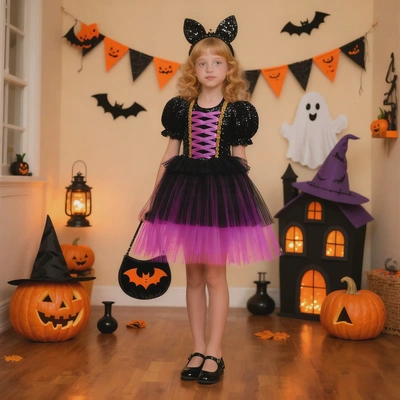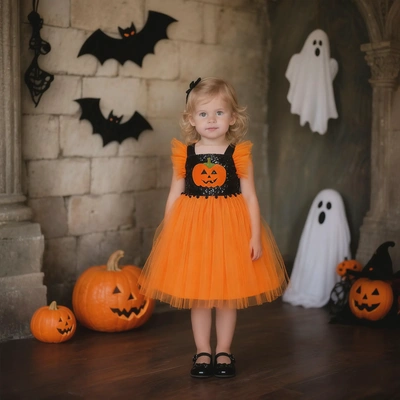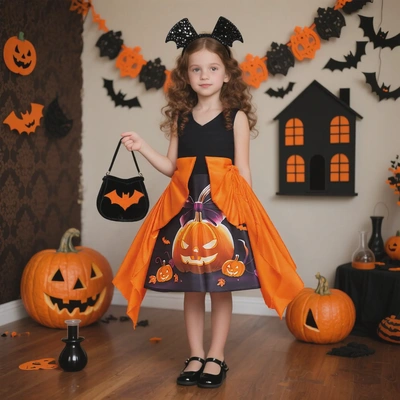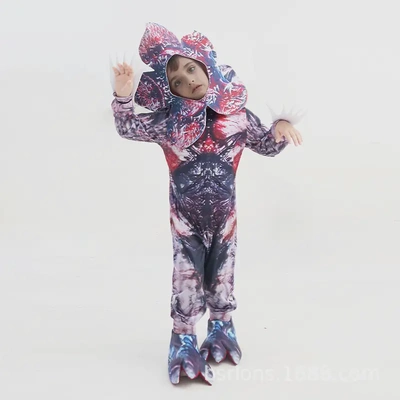How to Choose a Regular Party Dress Your Child Will Actually Wear?
Introduction
Selecting a party dress for your child that they'll be eager to put on involves considering multiple aspects. From their personal taste to practical elements like comfort and durability, these factors play a crucial role. This guide will help you navigate the process of choosing the perfect regular party dress for your child.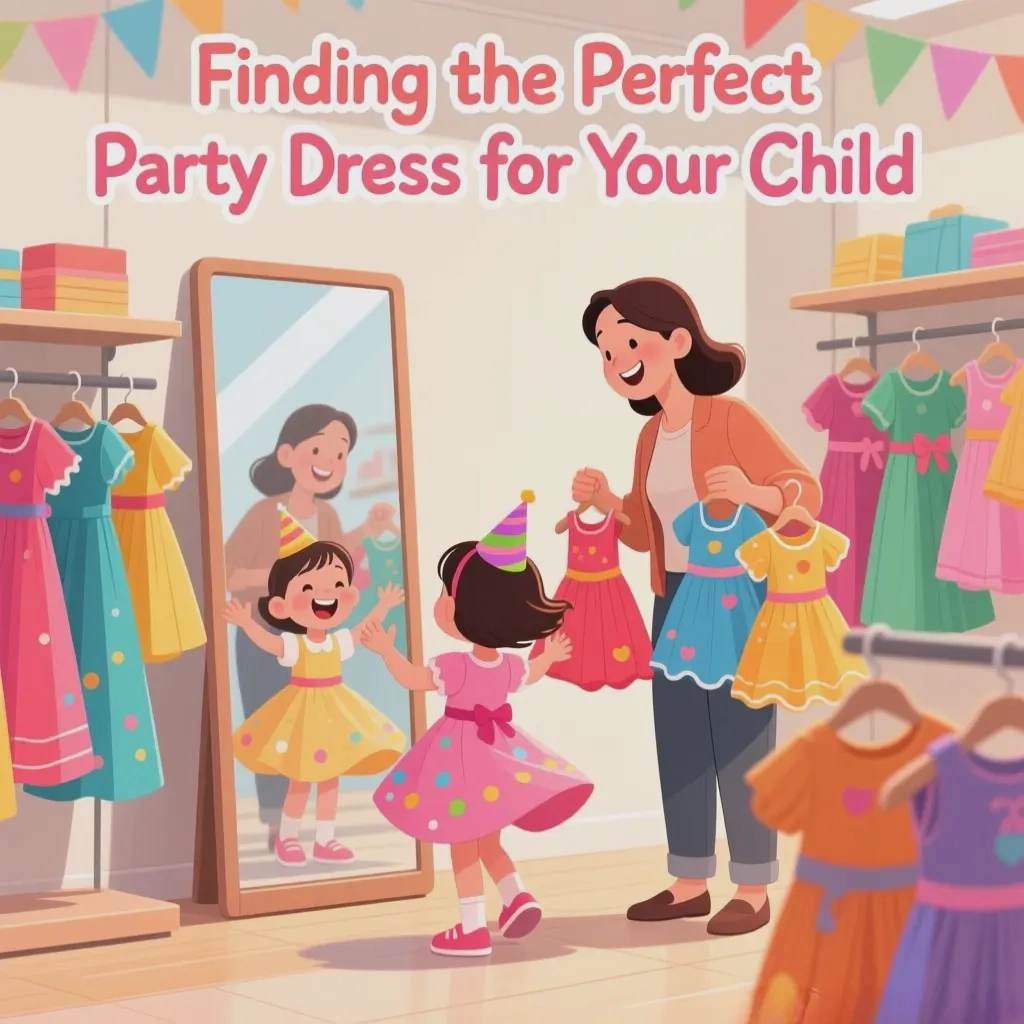
1. Consider the Child's Preferences
1.1 Color and Pattern
- Favorite Colors: Start by thinking about your child's favorite colors. If your little girl loves pink, choosing a pink-toned party dress is a great way to ensure she'll be excited about wearing it. Whether it's a soft pastel pink or a bright fuchsia, a dress in her preferred color can make her feel special. For boys, if they're into bold colors like blue or red, a dress shirt or a formal top in that shade can be appealing.
- Patterns: Patterns can also make a dress more attractive to children. Some kids might be drawn to floral patterns, especially if they're into nature-themed things. Others might love animal prints, like leopard or zebra, for a fun and trendy look. Stripes are a classic option that can add a touch of sophistication, and polka dots are always a hit for a playful vibe. For example, a party dress with a delicate floral pattern in a child's favorite color can be a winning combination.
1.2 Style and Design
- Dress Styles: Different children have different style preferences. Some might love the twirl factor of a full-skirted dress, like an A-line or a ball gown. These types of dresses are not only fun to wear but also great for dancing at parties. Others might prefer a more streamlined, sheath-style dress for a modern and sleek look. For boys, a traditional suit-style dress or a smart-looking waistcoat and shirt combination can be appealing, depending on whether they like a more formal or a slightly more casual-formal look.
- Details and Embellishments: Pay attention to the details. Some kids are into dresses with lots of frills, bows, or lace. A dress with a big, fluffy bow at the back or along the hem can add a touch of cuteness. Beads, sequins, or embroidery can also make a dress more exciting. However, some children might prefer a simpler design with minimal embellishments. Understanding your child's preference for these details is key.
2. Ensure Comfort
2.1 Fabric Selection
- Soft and Breathable Fabrics: Choose fabrics that are gentle on your child's skin. Cotton is an excellent choice as it is soft, breathable, and hypoallergenic. It allows air to circulate, preventing sweating and discomfort. Silk is another option for a more luxurious feel, but make sure it's not too slippery for younger children. Linen is also a good choice for its breathability, especially in warmer weather. Avoid synthetic fabrics that can be itchy or cause skin irritation.
- Stretch and Flexibility: Consider fabrics with some stretch, especially if your child is active. Jersey or stretch-cotton blends can provide the flexibility needed for running, jumping, and dancing at the party. This ensures that the dress doesn't restrict their movement and allows them to enjoy the event to the fullest.
2.2 Fit
- Proper Sizing: Getting the right size is crucial. Measure your child accurately before purchasing a dress. If buying online, refer to the size chart provided by the retailer. A dress that's too tight can be uncomfortable and restrict movement, while one that's too loose might look unflattering and could be a tripping hazard. For example, the shoulder seams of a dress should sit at the edge of the shoulders, and the length should be appropriate for the child's height.
- Adjustable Features: Dresses with adjustable features like elastic waists, adjustable straps, or buttons can be a great advantage. An elastic waistband can accommodate a growing child or allow for a more comfortable fit after a big meal at the party. Adjustable straps ensure that the dress stays in place without being too tight.
3. Think About the Occasion
3.1 Formality Level
- Formal Events: For more formal events like weddings, black - tie parties, or religious ceremonies, a more elaborate and formal dress is appropriate. Little girls might wear a long, elegant gown with sophisticated details like beading or lace. Boys could wear a well-tailored suit with a dress shirt and tie.
- Casual Parties: For casual parties, such as a birthday party at a park or a backyard gathering, a less formal dress is suitable. A knee-length sundress for girls or a pair of smart-looking shorts with a dress shirt for boys can be perfect. The key is to match the formality of the dress to the nature of the event.
3.2 Season and Climate
- Season - Appropriate Dresses: Consider the season when choosing a dress. In summer, lightweight, breathable fabrics are essential. A cotton sundress with short sleeves or a sleeveless design is ideal. In winter, look for dresses made of warmer fabrics like wool or velvet. You can also add layers like cardigans or tights for extra warmth. For example, a long-sleeved velvet dress with tights and a pair of warm boots is perfect for a winter party.
4. Durability and Maintenance
4.1 Quality Construction
- Sturdy Seams and Materials: Look for dresses with well - constructed seams. Check that the seams are straight, tightly stitched, and not likely to come apart easily. The quality of the fabric should also be good. High - quality materials are less likely to pill, fade, or tear, ensuring that the dress can be worn multiple times.
- Easy - to - Clean Fabrics: Since children can be messy, choose fabrics that are easy to clean. Machine - washable fabrics are a big plus. Avoid fabrics that require dry - cleaning, as this can be costly and inconvenient. For example, a dress made of a stain - resistant cotton blend is a practical choice for a child's party dress.
5. Involve the Child in the Selection
5.1 Shopping Together
- Let them Try On: Take your child shopping with you, if possible. Let them try on different dresses and see how they feel. This gives them a sense of ownership and allows you to gauge their reaction to the dress. They can also get a feel for the comfort and fit while in the store.
- Listen to Their Feedback: Pay attention to what your child says. If they complain about a dress being too itchy, too tight, or not their style, take their feedback into account. This helps in choosing a dress that they'll be happy to wear.
6. FAQ
Q: What if my child's taste is different from what I think is appropriate?
A: Try to find a compromise. You can suggest options that fit the occasion and are in line with your sense of appropriateness, but also take their preferences into account. For example, if they love a bright, bold color but you think it's too flashy for a formal event, you can look for a dress in a more muted shade of that color.
Q: How can I make sure the dress will fit my child in the long term?
A: Consider buying a dress that has some room for growth, especially if it's a more expensive or special-occasion dress. Look for adjustable features like elastic waists or cuffs. Also, keep in mind that children grow at different rates, so it's a good idea to check the fit regularly and make minor adjustments if needed.
7. Conclusion
Choosing a regular party dress that your child will actually wear requires a combination of considering their preferences, ensuring comfort, matching the occasion, and thinking about durability. By involving your child in the selection process and keeping these factors in mind, you can find the perfect dress that will make your child look and feel great at any party.

